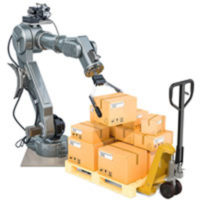
It has been over 60 years since the earliest robots were brought into workplaces. They are capable of increasing productivity and completing certain jobs better than humans. Today, they are being used in all types of workplaces, including warehouses and factories. Collaborative robots complete a myriad of tasks and can work alongside humans. However, there are still risks involved, and a conversation has opened about how this might impact Workers’ Compensation.
Humans and Robots Working Together
Although collaborative robots are produced, there is further work to be done before they can be situated in a workplace alongside people. They have safety features, but still need to be set up and programmed properly before they start work. Risk assessment studies also need to be completed.
Mandatory employee training should also be provided by employers before work begins. Due to past accidents caused by robots, the National Institute for Occupational Safety and Health (NIOSH) has been working to educate the public about safety measures, such as including sensors and physical barriers. NIOSH also created the Center for Occupational Robotics Research, which works with the Occupational Safety and Health Administration (OSHA) to increase safety awareness.
Possible Effects to Workers’ Compensation
Robots can malfunction and injure workers, leading to more Workers’ Compensation claims. Injured employees may decide to bring suit in these cases and may choose to sue the robot’s creator, as well as the manufacturer if a defect caused the malfunction. Modwatch, a Workers’ Compensation risk management organization, wrote that robots can also be used as witnesses for workplace injury claims. Robots can capture information, which would be unbiased, timely, and accurate. Modwatch also pointed out the importance of consistent robotics training for employees.
Helping Injured Workers
Robots are showing great promise in helping injured workers heal and return to work. Robotic exoskeletons are being used with permanently disabled patients. For example, the RYSEN harness is a non-traditional rehabilitation harness that uses a neural network algorithm to help patients. Expert Manipulative Massage Automation (EMMA), which is a prototype sports therapy robot that applies therapeutic massage techniques to patients, uses sensors and other functions to measure response. So far, it has been shown to aid in recovery. Supporters feel that EMMA shows potential for both pain management and injury rehabilitation.
Robots are also being used to dispense prescriptions, which involves the robotic system receiving a valid prescription, which it then picks, packages, and gives to a human. Since the Office of National Drug Control Policy reported a five percent error rate of filled prescriptions, many feel that robots can reduce this number. Regardless of the growing technology, companies that use robots in the workplace should proceed with caution, implementing proper training, stringent safety guidelines, and oversight.
Allegheny County Workers’ Compensation Lawyers at AlpernSchubert P.C. Help Injured Workers Claim Compensation
If you were injured at work and need help with your Workers’ Compensation claim, the Allegheny County Workers’ Compensation lawyers at AlpernSchubert P.C. can help. For a free case evaluation, call us at 412-765-1888 or complete an online form today. Located in Pittsburgh, we service clients in Allegheny County, Lawrence County, Washington County, and across western Pennsylvania.
